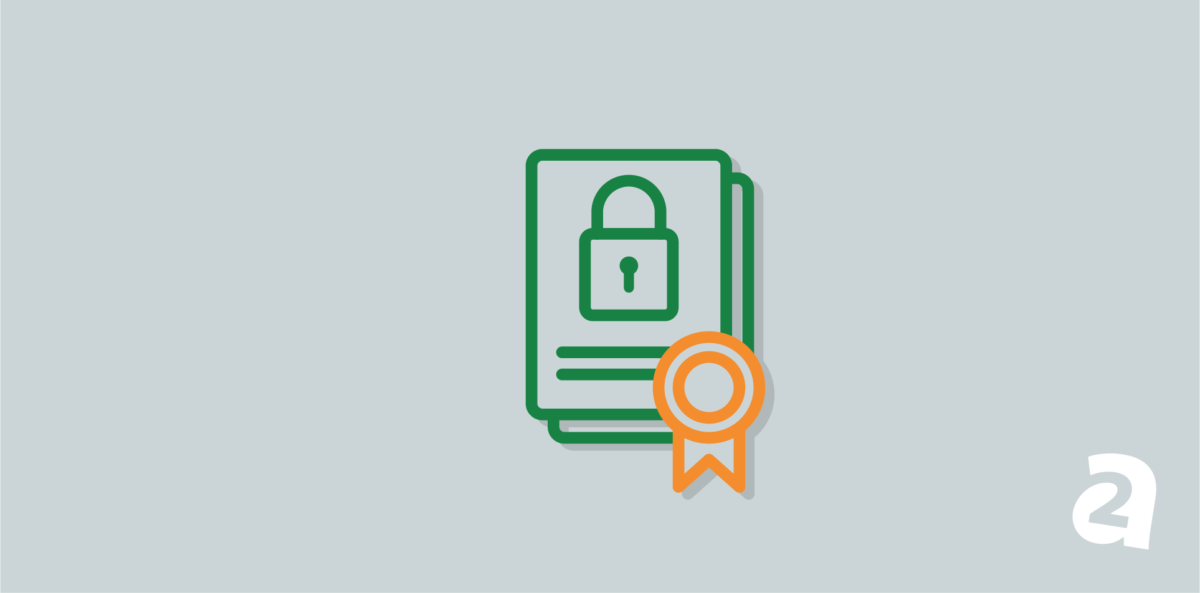- Sep 15, 2020
 0
0- by A2 Marketing Team
There are tons of options to consider when starting a new blog. A Content Management System (CMS) is generally built with bloggers in mind. This is why you’ll find a good number of ‘blog-centric’ features, such as the ability to add ‘user profiles’ to your blog.
User profiles are simply different accounts that offer different levels of access to your blog. If you’re looking to have other writers or users contribute to your blog, you’ll find user profiles very useful. You can use them to collaborate with other contributors while retaining administrative control over your site.
In this article, we’ll describe different user profile permissions in detail, share some benefits of adopting user profiles, and also show you how to create them. Let’s get started!
An Introduction to User Profiles
Virtually every piece of software is designed for use by different individuals, especially web apps. A user profile collects the specific data that defines how each individual accesses the software. It can contain various pieces of information depending on the function the software performs, such as the name and email address, profile picture, and login credentials.
One of the most important elements of user profiles every blogger must bear in mind the ‘user role’. This is a pre-defined label assigned to a specific user that determines the actions a user can take on a website. For example, WordPress offers these default user roles:
- Administrator. This role is the most powerful and is assigned to the creator of the site. In essence, an administrator can do everything all other users can do and more.
- Editor. This user can create, edit, and publish any page or post. They can also moderate comments, categories, and links. However, they cannot implement administrative changes such as installing themes and updates.
- Author. The role lets you add, edit, moderate, and publish your own posts, but nothing else.
- Contributor. On the other hand, a Contributor can only add or edit their own posts.
- Subscriber. Subscribers can only read posts on a blog.
- Super Admin. If you’re running a multi-site connection, this role has access to the entire network and can implement changes such as deleting sites.
As a blog owner, it’s highly recommended to carefully assign the more powerful user roles. For example, Administrator roles are usually only assigned to one or two users on the site. Any more than this, and you begin to potentially introduce security concerns onto your entire website.
The Benefits of Using User Profiles
Apart from helping to identify contributors on your site, here are some of the other ways bloggers can benefit from utilizing user profiles:
- Collaboration is easier. With the help of user profiles, several users can contribute to your blog with more organization. You can assign duties to different users by simply defining their roles. In other words, you can easily manage the entire publishing process from start to finish without hassle.
- They permit freedom and security. Every contributor is free to manage their own content with a defined user role. This again helps organization while preserving autonomy. For example, in the case of the Administrator role, if a third-party has to manage critical changes such plugin installation, you can create a new temporary user profile with administrative privileges.
- They enhance productivity. With better collaboration, you’ll end up achieving more with your blog. As such, everyone will be more productive and your blog readers get to read varied content from different authors.
In essence, bloggers have a lot to gain by having multiple user profiles on their blogs. Now, let’s go on and show you how to create your own user profiles.
How to Create Your Own User Profiles
The process of creating new user profiles on the majority of CMSs is similar. However, in this article, we’ll use 3 of the most popular options – WordPress, Joomla!, and Drupal to illustrate what the process typically entails.
1. How to Create WordPress User Profiles
As we mentioned, only users with Administrator privileges can add new users to a blog. Once you log into your WordPress website using your Administrator login credentials, navigate to the Users > Add New tab within the dashboard:
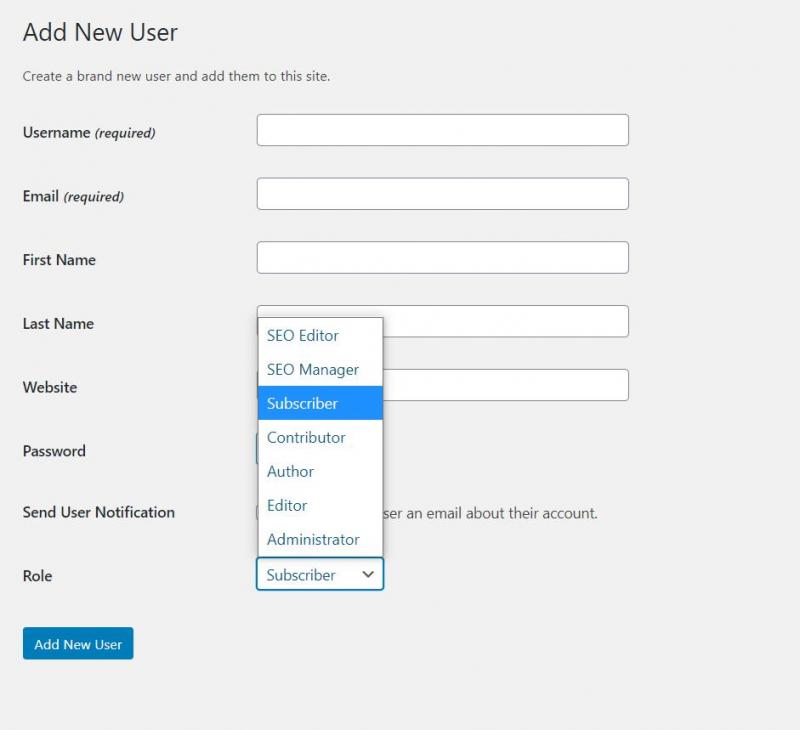
You can now add the new user’s information. This is where you get to assign a role to the user. By default, WordPress notifies the new user by email once you’ve created their new profile.
However, you can uncheck this box if you don’t want them to be notified. Once you’re done, you can click the Add New User button and you’ve just successfully opened up your blog to third-party collaboration!
2. How to Create Joomla Profiles
To create Joomla profiles, begin by logging into your administrator panel with your login credentials. You’ll usually find the panel at a link similar to https://mydomain.com/administrator.
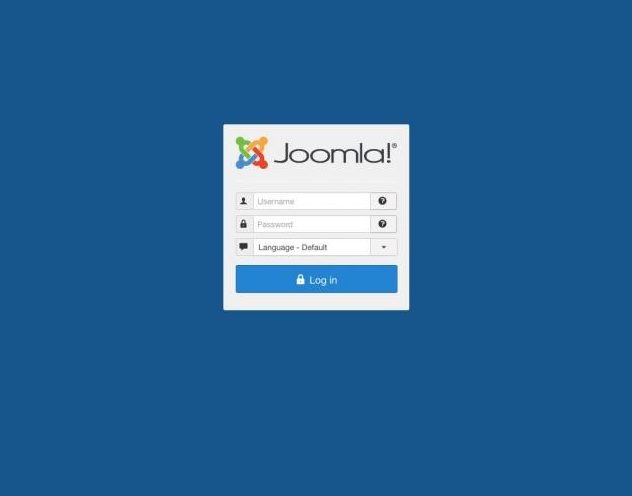
To add a new user, simply navigate to Users > Manage > Add New User within your administrator panel:
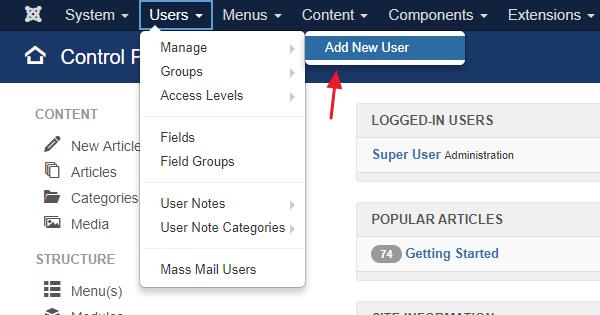
The next screen displays three tabs where you can tweak the new user’s information and privileges as you wish – Account Details, Assigned User Groups, and Basic Settings:
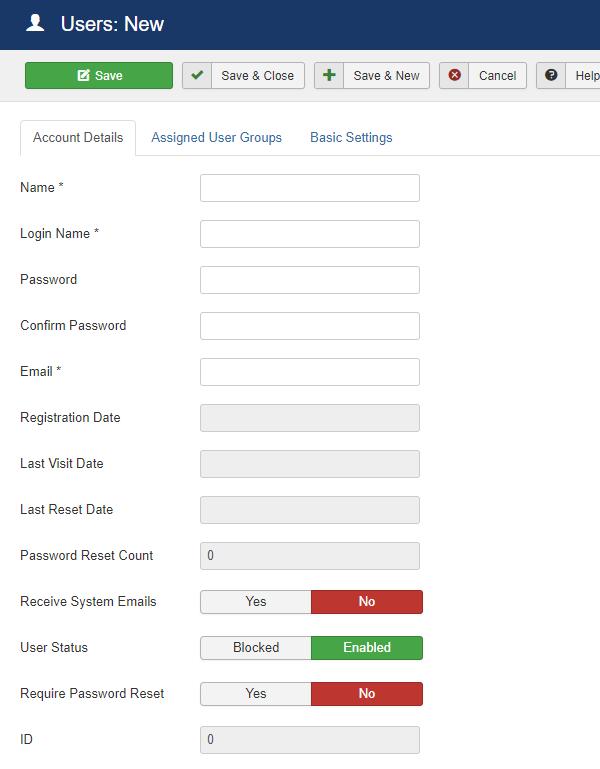
You can define user roles under the Assigned User Groups tab. Once you’re done here, simply click the Save button.
3. How to Create Drupal Profile
To create your Drupal user profile, head to your admin panel by navigating to your domain’s admin page (for example, https://yourdomain.com/admin,) and filling in the details.
Once you’re in the admin panel, navigate to People > List, and click the Add user link:
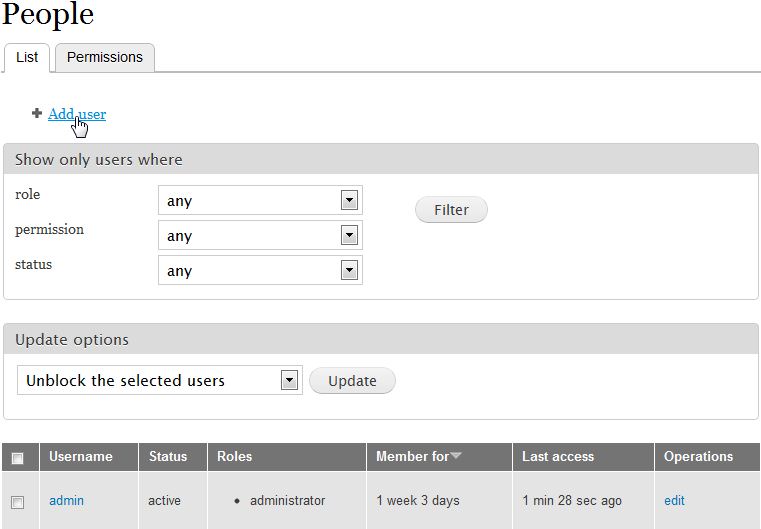
After adding the new user, fill in all the available information fields.
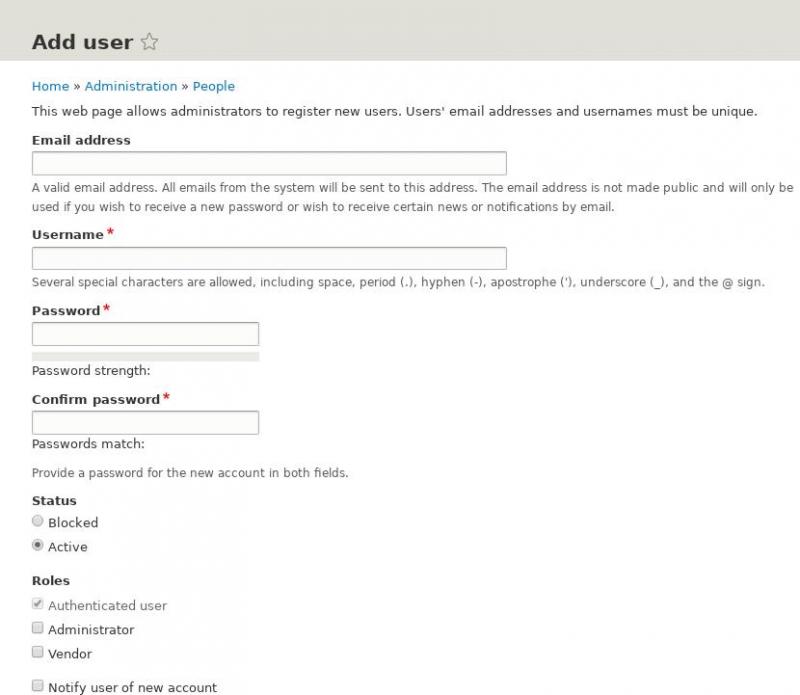
You can assign the new user a role under the Roles section. Drupal will also notify the user by email if you check the box.
Conclusion
User profiles are an effective and often necessary way of managing content contributions on your blog. They significantly ease the process of collaboration and help bloggers to be more productive.
User profiles help bloggers by boosting their productivity and offering freedom and security while collaborating together on the same project. Fortunately, the process is straightforward, no matter whether you’re using WordPress, Drupal, Joomla!, or any other CMS.
Image credit: manfredrichter.
